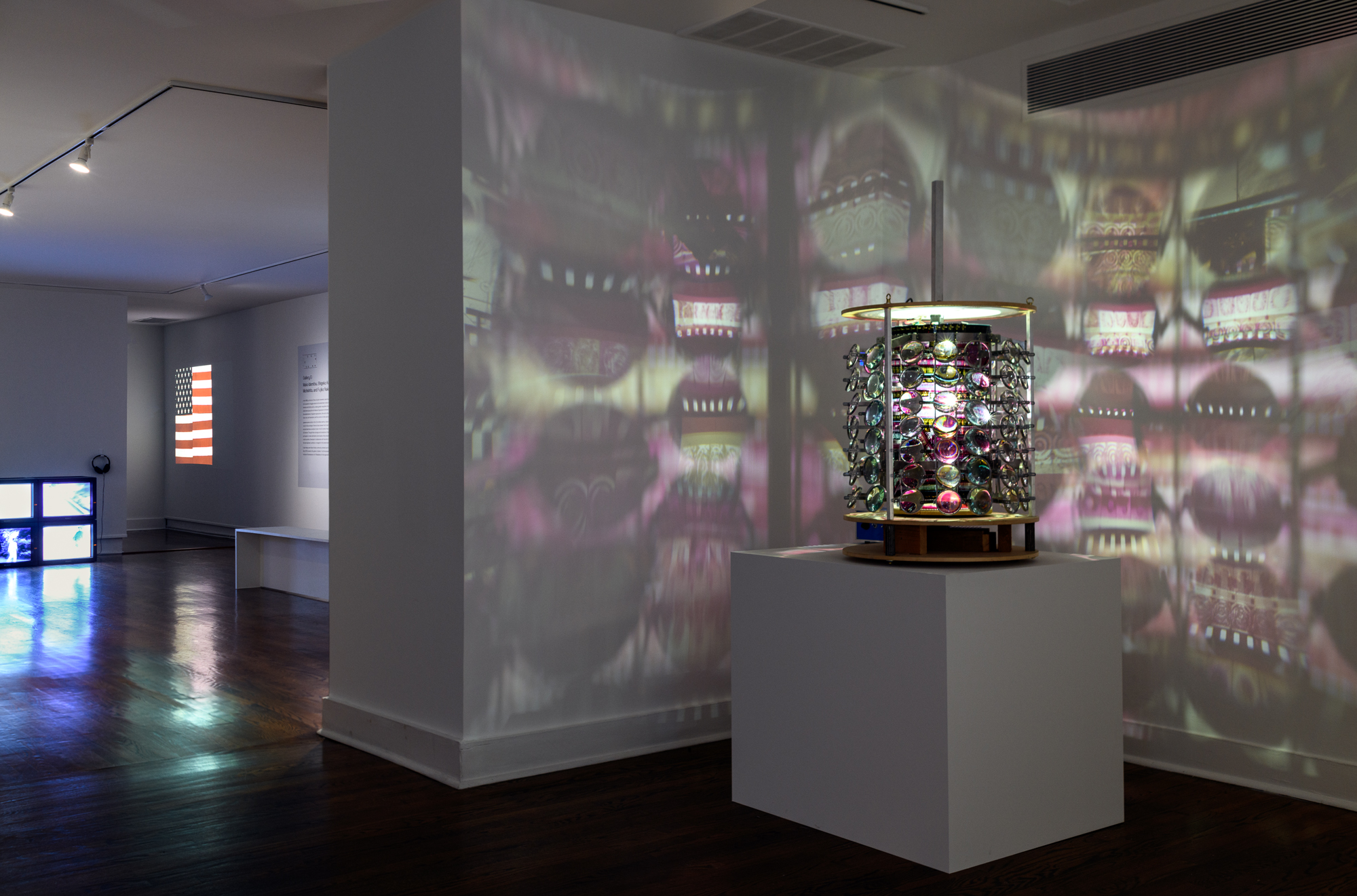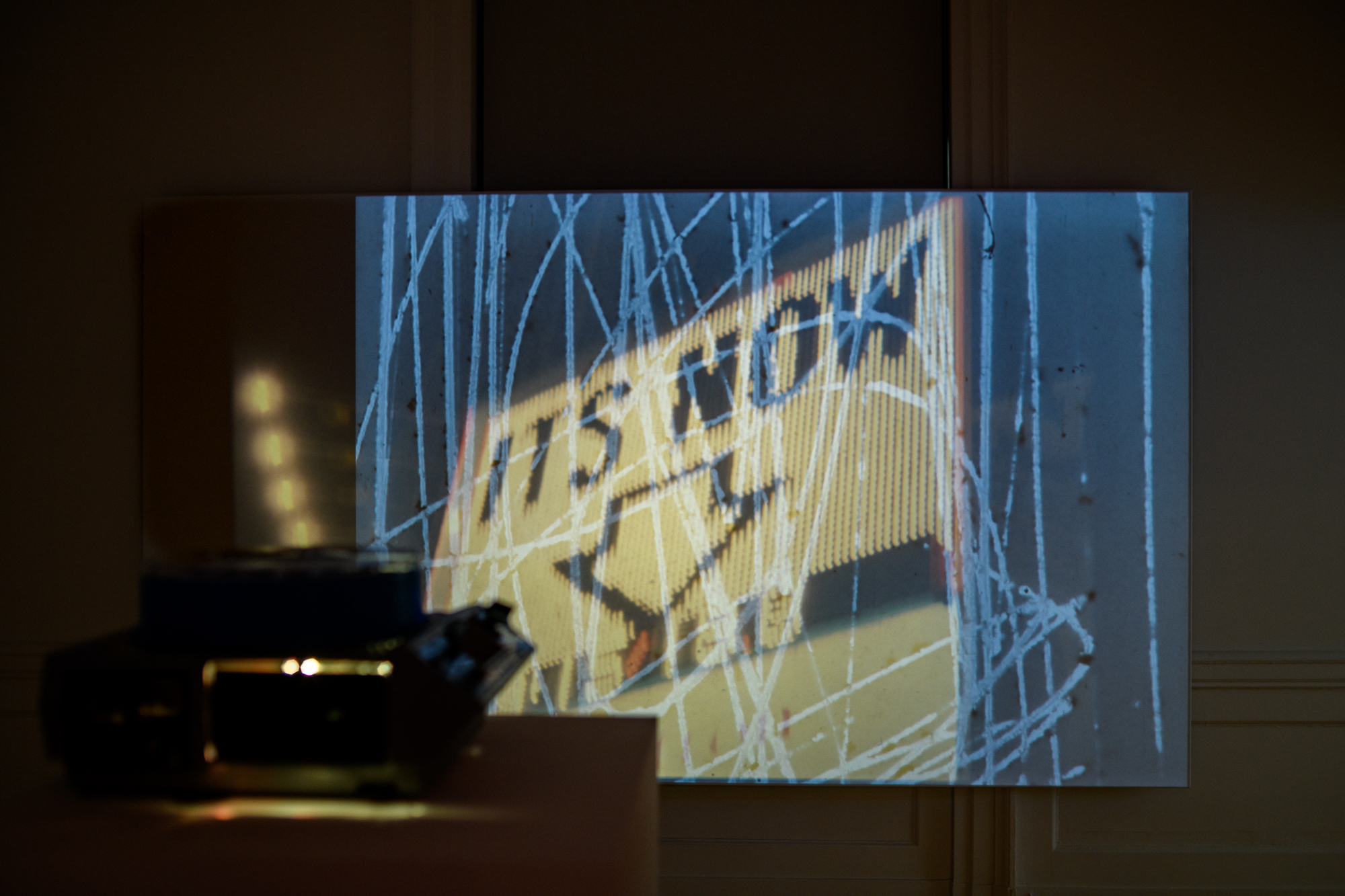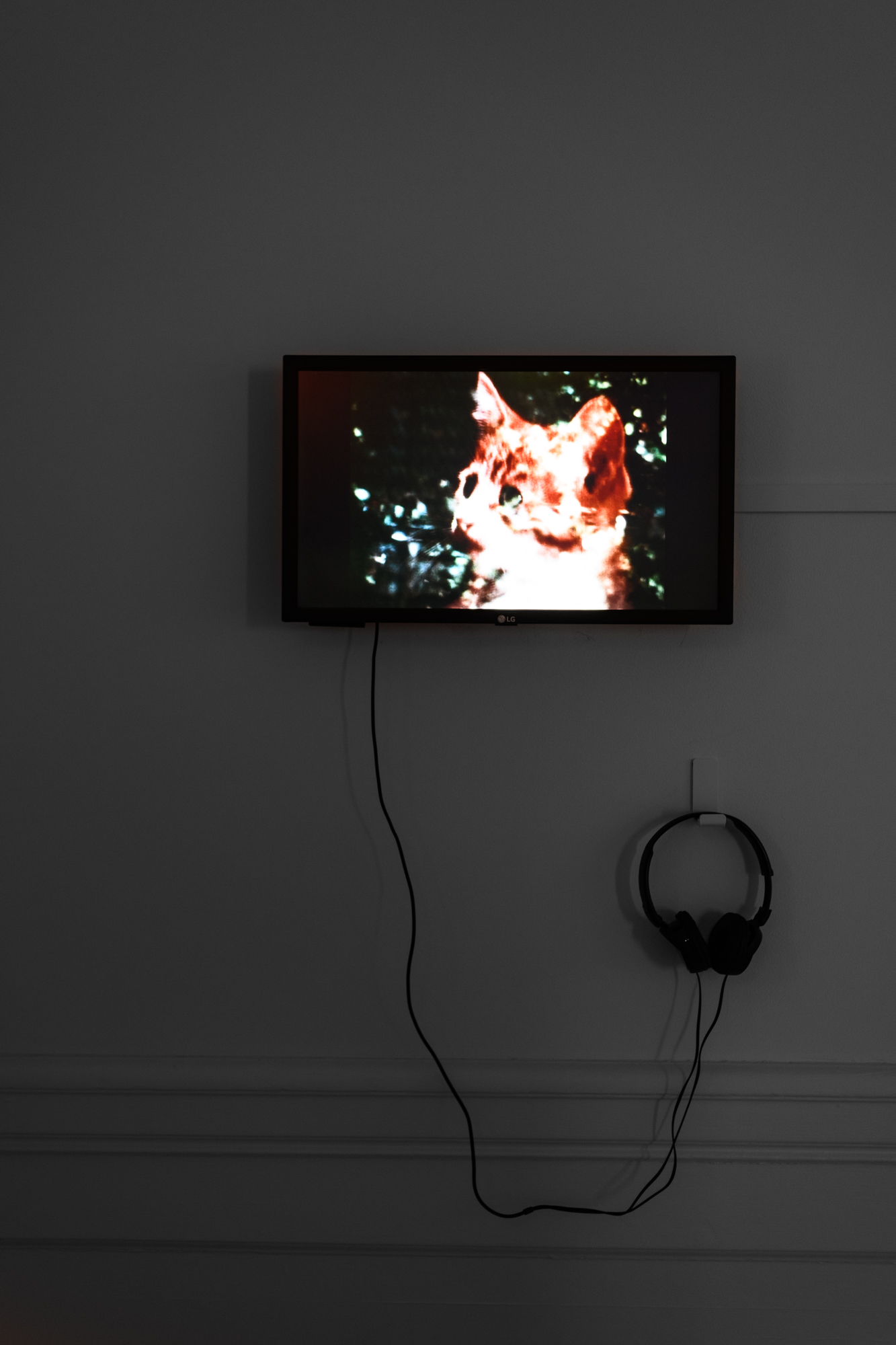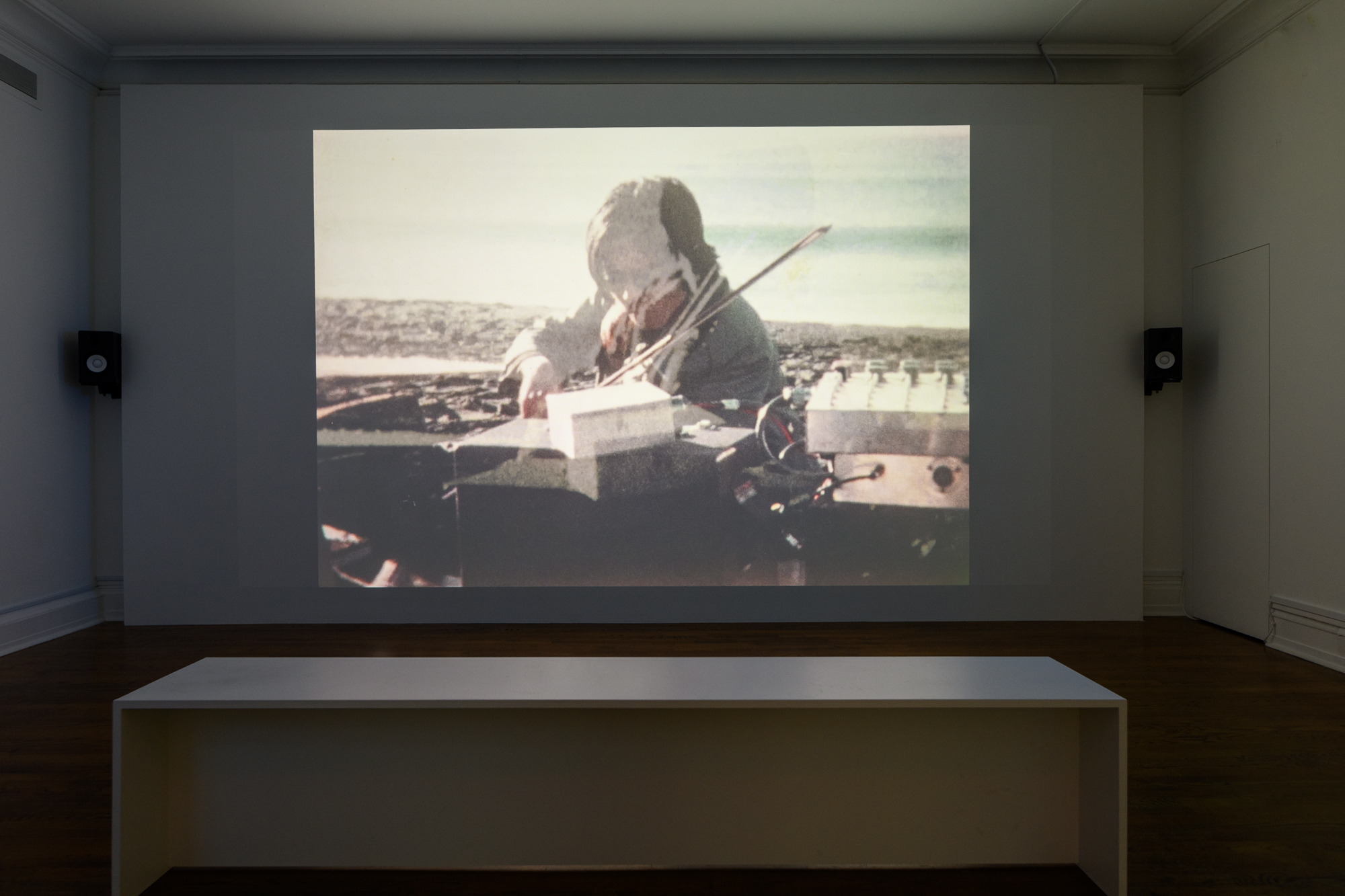Shows
Community of Images: Japanese Moving Image Artists in the US, 1960s–1970s

Community of Images: Japanese Moving Image Artists in the US, 1960s–1970s
Philadelphia Arts Alliance
Philadelphia, Pennsylvania
June 14–August 9
Curated by the collective Collaborative Cataloging Japan (Go Hirasawa, Julian Ross, and Ann Adachi-Tasch) and the Japan America Society of Greater Philadelphia, the exhibition “Community of Images: Japanese Moving Image Artists in the US, 1960s–1970s” spanned video, projection, and ample ephemera from the two decades that wrought seismic social, cultural, and aesthetic shifts across the two countries. “Community of Images” located avant-garde Japanese artists’ substantial contributions to this period, showcasing their deft manipulation of nascent image-making technologies and everyday paraphernalia.
Like Europe’s Situationists International or those artists involved in Happenings in the United States, Japanese artists of this era alluded to the ideal of an interconnected, experimental, and ultimately, utopian world. Growing up during World War II, this generation of artists later came of age when Japan rebuilt from its devastation and reestablished ties with the West. Two policies enabled them to travel, study, and live in the States: the US-Japan Security Treaty (Anpo joyaku in Japanese) in 1951, which allowed a US military presence on Japanese territory; the Immigration and Nationality Act in 1965, which permitted greater numbers of Asians to emigrate to the country. Highlighted by the curators throughout the exhibition, the former policy, fervently discussed and passionately protested across the country to the present day, was pivotal to the social, political, and aesthetic development of their practices.

Installation view of TAKAHIKO IIMURA‘s and ALVIN LUCIER’s Shelter 9999, 1966-68, three-channel projection and stereo sound installation: 35 min. Photo by Constance Mensh. Courtesy Collaborative Cataloging Japan.
For instance, anchoring the exhibition’s first gallery was Takahiko Iimura’s and Alvin Lucier’s Shelter 9999 (1966–68), a three-channel projection and stereo sound installation placed in an underground-like darkened room. Looping scratchy, grainy abstract imagery alongside electronic music, this work is the artists’ reimagination of a post-Cold War world inspired by the many fallout shelter signs peppering the streets of New York during the 1960s. According to the curators, it is a speculative “shelter of the future” in which the threat of nuclear war has perished. Like most artworks there, Shelter 9999 pieced together photographs and materials dispersed through several archives. To accompany it, a case on the left displayed samples from such archival materials, including snapshots, postcards, and other documents from Iimura’s and Lucier’s collaboration. Also within the collection were those of The Sparks, a four-person performance collective they formed together with their wives, Akiko Iimura and Mary Lucier. Akiko Iimura, a writer and filmmaker, has produced dozens of films and a few with her husband, and while Mary Lucier’s work was absent from the exhibition, she is a critical voice in the experimental moving image-based works of the period. On the other side of Shelter 9999, Akiko Iimura’s Mon Petit Album (1973), a ten-minute video collage with color and sound, was perhaps the most poignant work in the exhibition, despite its presentation being limited by the small screen. In it, a surreal soundscape oscillating between natural and instrumental sounds accompanies images of nature (the ripples of a pond) and intimate scenes from domestic figures (a little girl playing), hinting at an anti-war stance to the destruction of nuclear conflict, and as a reflection of the historical zeitgeist.

Installation view of AKIKO IIMURA’s Mon Petit Album, 1973, color, sound: 10 min. Photo by Constance Mensh. Courtesy Collaborative Cataloging Japan.
While listening to Mon Petit Album through headphones was an intimate experience, the permeating ambient and noise-driven tone of Shelter 9999 overshadowed the smaller-scale work’s soft, graceful power. This happened a few times throughout the exhibition, such as Mako Idemitsu’s Women (1977) and Kyoko Michishita’s Being Women in Japan: Liberation Within My Family (1973–74), both on the upper floor, which, like Iimura’s work downstairs, are viscerally sincere and expressive images of life and community during the turbulent ’60s and ’70s. These videos document and distill the realities of womanhood and femme identities when feminism of that time began to adopt political power in both Japan and the US. Like Mon Petit Album, their subtle potency ruminates with a certain candor and humor on the lived experience of women. Again, being shown on relatively small screens, the sounds of both Idemitsu’s and Michishita’s works were only accessible through headphones, incongruous to works nearby like Seiichi Fujii’s wall-sized projection Body Wave (1970–71), a performance by musician Takehisa Kosugi of the Taj Mahal Travelers, and the loud sonorous video collage of nuclear tests and airstrikes in Great Society (1967) by Masanori Oe and Marvin Fishman.

Installation view of SEIICHI FUJII’s Body Wave, 1970-71, 16mm film transferred to digital video, double projection: 35 min. Photo by Constance Mensh. Courtesy Collaborative Cataloging Japan.
Shaped by the spectacle-filled 1960s and ’70s, the interdisciplinary and cross-cultural partnerships between the artists of that era marked the radical shifts in culture and politics. And their stories were beautifully reconstructed by the curators through richly extensive archival research. However, the show was arguably too didactic, and diluted by the plethora of information. The inclusion of context on every artist weighed the artworks down with too much expository pressure. Evocative works, such as Iimura’s delicate and powerful Mon Petit Album, needed no such explication to connect with the audience.
Leah Triplett Harrington is a writer and curator currently serving as director of Exhibitions and Contemporary Curatorial Initiatives at the Pennsylvania Academy of the Fine Arts in Philadelphia, PA.







